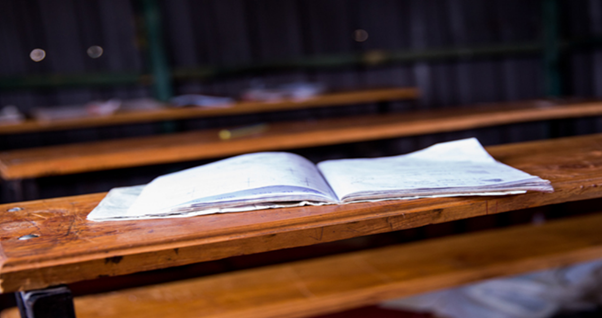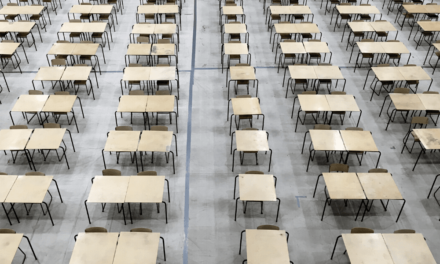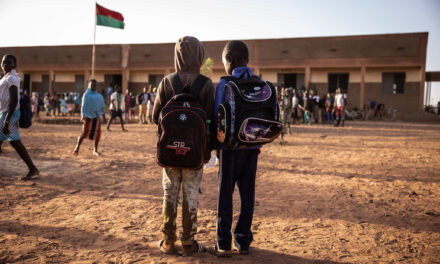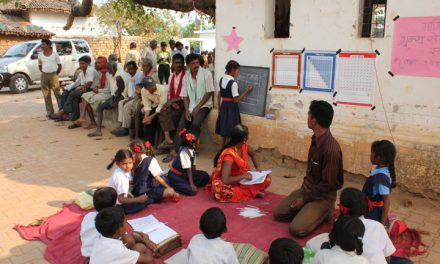This article was written by Rachael Fitzpatrick, Astrid Korin and Anna Riggall from Education Development Trust – authors of the new report: An international review of plans and actions for school reopening
The current state of school reopening across the globe is chaotic, varied and deeply political, and with increasing concern for learning loss and wellbeing, governments are under pressure to act. Decisions around school reopening are still primarily driven by the level of control of the virus, but concerns around economic impacts and pupil wellbeing have driven some systems to reopen even where the prevalence of the virus remains high. The situation changes rapidly – for instance, in the two-week period between 12 and 23 October, 27 countries changed their school reopening status, with some bringing forward reopening plans, and others delaying them. To meet the urgent need for evidence on the emerging challenges and solutions in this crisis, Education Development Trust is conducting rapid reviews of the latest published research, guidance documents and media commentary to produce accurate analyses of the current global situation, and draw evidence-informed conclusions on how the world’s education systems can best recover from the impacts of Covid-19. Here, we discuss some key findings from our most recent report.
Many children have not spent enough time learning while their schools have been closed – and will need access to resources and support from caregivers to avoid falling further behind.
There are widespread concerns about time spent learning and learner engagement, which risk disadvantaged children falling dramatically behind. Concerns have been raised by NGOs, governments and other multinational organisations that children are at risk of falling behind if they are not engaged in learning activities during closures, with the most disadvantaged households potentially the worst hit. This concern has not been limited to low-income contexts, but has also been noted in high-income countries such as the UK. At the peak of school closures, research by NFER found that only six in ten students in England were in contact with their teachers during school closures, with the most disadvantaged students the least likely to be engaged in schoolwork.
Access to technology continues to pose challenges to remote learner engagement, but access alone does not guarantee learner engagement. In Bangladesh, for example, less than 40% of students were able to access the educational television channel – a key means of remote education provision. While technology has great potential to assist home learning, we must be realistic about the access gap and the possibility that technology solutions will exclude disadvantaged students. As remote education provision persists, either in full or as part of flexible plans to support school reopening, a ‘no-tech safety net’ is necessary as an integral part of remote learning provision.
Time and parental support appear to be significant factors in remote education continuity. Even where students have had access to resources, evidence suggests that learners are not consistently using them, and that time for study amid household responsibilities has been challenging in many parts of the world. For example, in contexts as diverse as Ecuador, Sierra Leone, Bangladesh and Uganda, many children are expected to complete household chores throughout the day, which makes the timing of scheduled remote lessons an important factor in ensuring access to remote learning. The role of parents and caregivers is also highly significant: in Mongolia, 74% of households pursuing distance learning reported that a caregiver was needed to support children’s educational activities, while in Ghana, a lack of adult supervision was cited as the most common reason why children were not spending more time on education.
Students and teachers need targeted support in school reopening and recovery.
Student and teacher wellbeing continues to be a concern for the education community – and it is critical that policymakers continue to prioritise issues of wellbeing and mental health in their reopening and recovery planning. It is too early for us to fully understand the extent of the impacts of school closure and reopening, but it is clear that the pandemic has had negative impacts on students’ and teachers’ wellbeing across the world. In Thailand, a UNICEF survey found that 70% of young people felt frustrated, anxious and stressed as a result of lockdown, while a Human Rights Watch report quoted many young people were feeling more anxious because of school closures. Meanwhile, in Vietnam, 62% of surveyed teachers stated that the shift to online learning had increased their workload, while the in the UK, 52% of teachers felt their mental health and wellbeing had declined during the pandemic.
School reopening plans should be ensuring that teachers are not only able to return to work safely, but are provided with professional development to support them to respond to learners needs effectively. Coordinated, targeted support will be critical in helping to address learning loss – and there are already examples of effective practice around the world. In Uganda, StiR Education has worked with the Ministry of Education to provide support for teachers to help them meet the needs of learners returning to school, through a combination of radio broadcasts, coaching, group conversations and professional development planning support. Such coordinated support will be vitally important to both teachers and their pupils as they return to classrooms.
Effective reopening and recovery is about more than health and hygiene measures – it will also require effecting planning for addressing learning loss, good data, and sufficient funding.
While it is crucial to ensure that schools can reopen safely, the effective reopening and recovery of school systems will depend on a clear plan to ensure re-enrolment and address learning loss. Understandably and quite correctly, health and safety issues are a huge priority for governments. There is, however, also a need to focus on action that will restore learning – and this will require thoughtful policy. Targeted interventions to ensure vulnerable children, especially girls – who are likely to have been deeply affected – return to school need to be a priority. However, at present, only 32% of countries have employed targeted campaigns to encourage communities to support girls to return to school, and only 6% of countries have revised their access policies to allow pregnant girls and young mothers to attend school. More broadly, policymakers need effective plans to mitigate learning loss. Two thirds of countries – including Jordan, Luxembourg and England – intend to use remedial programmes, but less than one third plan to or have introduced accelerated learning programmes, despite considerable evidence of their effectiveness.
Good data and system intelligence will be required if governments are to act responsively and strategically. To be effective, plans for reopening and recovery need to be implemented in a data-driven, adaptive manner. There is limited evidence of system-level emphasis (for example, in gathering disaggregated data on absenteeism or participation levels among students from different backgrounds), but without such fine grained information, it will be impossible for policymakers to measure the success of reopening policy, or to adapt implementation in response to emerging evidence. Moreover, as systems reopen, levels of enrolment and drop out – particularly among vulnerable groups, including girls – must be carefully and accurately monitored. This must be followed by careful tracking of learning for these groups.
Finally, it is vital that short-term and long-term funding for education is secured. There is a real risk that funding for education will be cut because of the health emergency. The economic crisis resulting from Covid-19 will increase the number of people living in poverty globally, and may significantly constrain their ability to prioritise expenditure on education. Donors may have reduced funds and may not see spending on education as a top priority. The extent of the financing gap in education post-Covid-19 is yet unknown, but several global players are rightly making the case for education budgets to be protected. There is also, of course, a need to ensure that the money is spent wisely – ensuring that the right resources are in place so that all children, regardless of background, have access to good quality school education.






I really appreciate the work you have done, you explained everything in such an amazing and simple way.